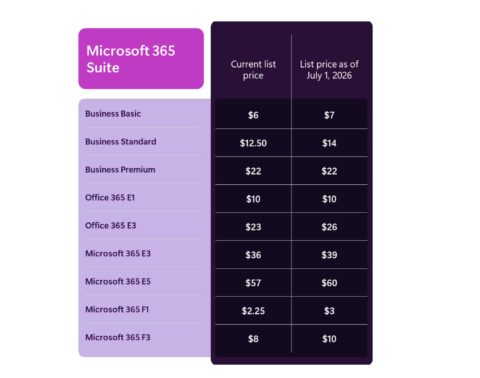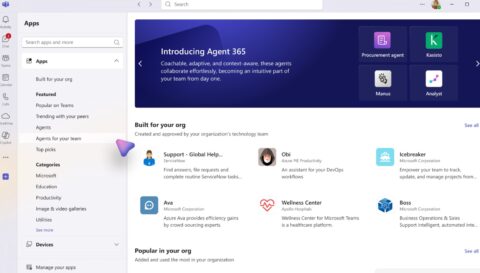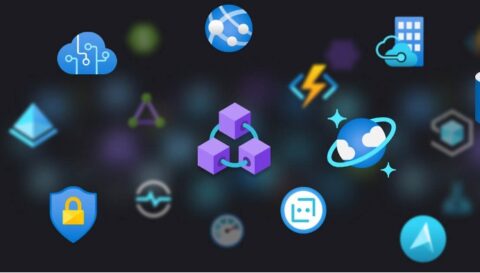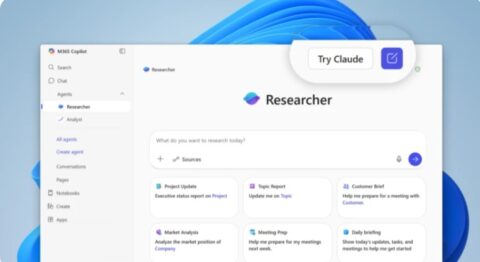Updated: September 16, 2024 (September 12, 2024)
BlogMicrosoft’s Stealthy – and Strategic – Move to the Edge

In a podcast with my good friend Mary Jo Foley a few weeks ago, I made the perhaps outrageous claim that Microsoft’s increased support of computing at the edge may turn out to be more strategic than its embrace of AI.
Really.
Don’t believe me? Read on.
Why “Edge Computing” Anyway?
Five years ago, the enterprise computing zeitgeist was “migrate all your IT systems to the cloud,” and in that time, well, most did.
But there were some nagging problems. One size, as we came to learn, did not fit all.
Cloud Computing Implies Unpredictable Latency
Those factory IoT devices, for example, require what we call deterministic latency, which very simply means that you have run that drill press that punches out quarter panels every three seconds precisely, or maybe you’ll turn a worker’s arm into a car part. That precision means that it’s not such a good idea to control the press from a cloud application thousands of miles away sending commands over the open internet — where messages may take a different route, with varying numbers of hops – every time.
Not All Systems Are Always Connected

Last year my wife and I enjoyed a Mediterranean cruise aboard the ultra-modern Celebrity Beyond, and, being a geeky kind of guy, I signed up for the “behind the scenes” tour. Entering the engine control room, I expected to see a grimy, noisy compartment with grease-covered sailors manning the controls – something out of the movie Titanic, I suppose. Instead I saw rows and rows of keyboards and screens – and just one crewman running the whole thing. (I snapped the photo to the right.)
Everything on the ship was connected: arranging tours and excursions, dinner reservations, shows and events. Because of course the ship spent most of its time at sea, all this processing had to be performed on board.
And this “occasionally connected” scenario is quite common. In a remote location like a mine, for example, or an oil platform, connectivity may be unreliable. But the apps must still run.
Regulatory Compliance
Many countries require that data about their citizens be stored locally, and not in a public cloud elsewhere. That translates to the technical requirement that data be processed at its source; and that it must be anonymized or minimized before it or any part of it is sent to the cloud – and all that means organizations must have secure and sophisticated systems in those localities.
Thus, as David Linthicum very correctly points out, more and more governments are considering so-called “sovereign” clouds, that is, “semipublic” data centers hosting cloud services just for those countries. (Of course, Azure’s GCC offerings provides a sovereign cloud for the US.)
Putting All the Pieces Together
These scenarios – and there are countless more like them (retail stores, oil platforms and refineries, wind farms, hospitals, and so on) – add up to a common definition of the edge: computing systems that run in any location, that have predictable latency, and can support complex and varied application scenarios.
Nearly all edge systems will be connected, if occasionally or even rarely, to the cloud, so we’d like a common programming architecture and a common, centralized management model.
Microsoft at the Edge
Over the past few years Microsoft has rolled out a series of products and services which, in my opinion, position them ahead – way ahead – of their competitors when it comes to edge computing.
Of these, several are especially significant:
Arc, 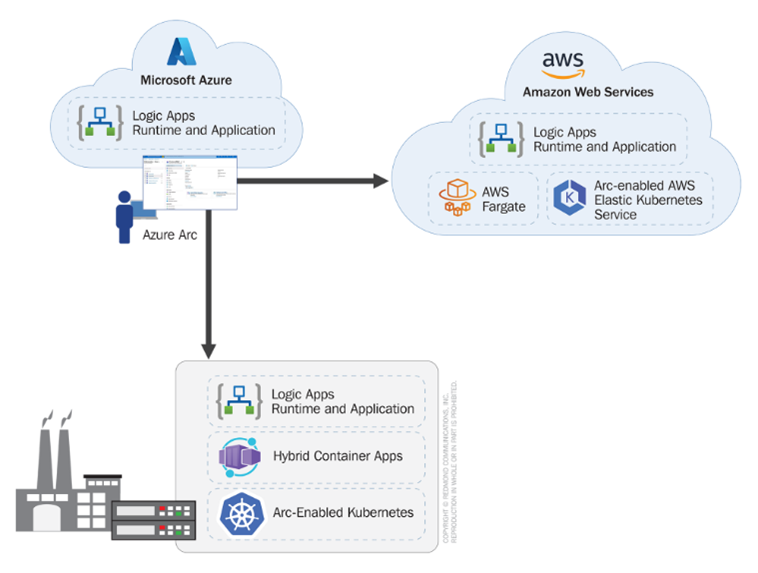 which my colleague Jim Gaynor covers in depth in a forthcoming report (entitled “Azure Arc Has Tangible Benefits But Tethers Customers to Microsoft”), lets administrators deploy and manage Azure-connected edge resources from a single pane of glass. Arc can manage remote Linux, Windows, Kubernetes, SQL Server, Logic Apps, Container Apps, Functions, VMware vSphere – and many (many) others running at the edge, with more coming (for example, public preview for Azure Container Storage enabled by Arc Edge Volumes was announced just last week, enabling fault-tolerance, failover, and storage observability).
which my colleague Jim Gaynor covers in depth in a forthcoming report (entitled “Azure Arc Has Tangible Benefits But Tethers Customers to Microsoft”), lets administrators deploy and manage Azure-connected edge resources from a single pane of glass. Arc can manage remote Linux, Windows, Kubernetes, SQL Server, Logic Apps, Container Apps, Functions, VMware vSphere – and many (many) others running at the edge, with more coming (for example, public preview for Azure Container Storage enabled by Arc Edge Volumes was announced just last week, enabling fault-tolerance, failover, and storage observability).
Container Apps lets developers write containerized applications and run them in a serverless environment on the edge. And recently Microsoft announced that Logic Apps will be supported at the edge as containers running on Container Apps, so we can expect enterprise-class workflows like EDI/X.12 at the edge: perhaps useful for warehouse applications. Indeed: as more and more Azure services are containerized, we can expect to see them appear on the edge.
That’s a big deal.
Azure IoT Operations 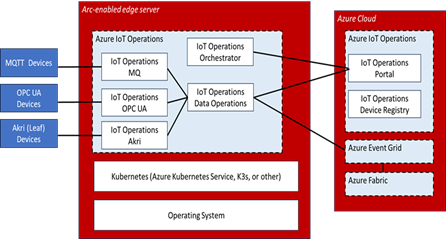 targets large-scale IoT applications. IoT Ops comes with OPC UA and MQTT interfaces (and supports others via Kubernetes Akri) and provides a data pipeline that lets developers process and filter IoT messages at the edge. Using Azure IoT Ops means your apps no longer have to send every message to Event Hubs in the Azure cloud – and thus you can get that deterministic latency we talked about earlier. (But a caveat: it’s been in preview now for almost a year, so perhaps approach with caution.)
targets large-scale IoT applications. IoT Ops comes with OPC UA and MQTT interfaces (and supports others via Kubernetes Akri) and provides a data pipeline that lets developers process and filter IoT messages at the edge. Using Azure IoT Ops means your apps no longer have to send every message to Event Hubs in the Azure cloud – and thus you can get that deterministic latency we talked about earlier. (But a caveat: it’s been in preview now for almost a year, so perhaps approach with caution.)
And by the way, all of these run on Linux as well as Windows.
Let’s summarize. At the edge (anywhere in the world, almost literally), using the aforementioned Microsoft products and technologies, you can:
- Deploy, run, and manage cloud-native applications
- Process data wherever is appropriate
- Build modern IoT applications with deterministic latency
- Leverage all the security features of a modern software stack
- Use all the cloud architectural paradigms and tools you’ve learned over the past few years
- Manage them all from one place using Arc.
That’s pretty cool.
The Strategic Importance of the Edge
So why do I think edge computing is more strategic than AI for Microsoft? Because, as we look around, the enterprise computing market is saturated with AI, from not just every cloud vendor but from hundreds of smaller companies and startups as well. Switching costs are minimal: if you don’t like the answer from one of the copilots, go to any of the other LLMs.
But edge systems are entrenched. Once a system is deployed, say, in a factory, it’s very difficult – and disruptive to operations — to rip it out and replace it, which is why there are still OLE for Process Control (OPC) Classic-based industrial automation systems (based on Windows DCOM!) still out there in the world.
As customers seek to modernize their remote systems, they’ll find Microsoft’s edge story pretty compelling; and as they build applications that are connected and managed from Azure, that deeply embed Microsoft technologies like Azure IoT Ops and Arc, not to mention both local data analytics and filtering backed by Azure AI, they’ll ever more deeply establish the Microsoft edge in their environments.
That’s pretty darned strategic and differentiating.
Disagree? Think I should be relegated to the edge? Drop me a line at bbriggs@directionsonmicrosoft.com.

